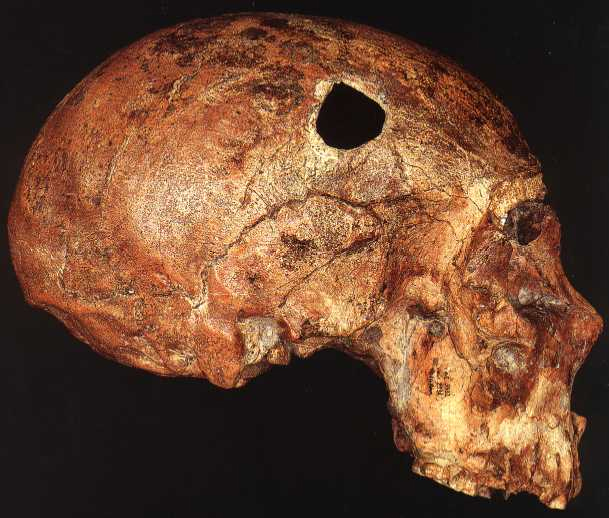I first posted this back in 2012 so many may have missed it. I've added a little more to the piece but I think it important to remember that Dr Vallee brought this account into Ufology whereas it is more properly a folk or faery tale.
Ufology is so full of confusion and will never "solve" the mystery because it is a huge mixing pot of case histories that have nothing to do with UFOs. For example: someone who has had some possible poltergeist activity in their house saw a Light-in-the-sky (LITS) therefore there may possibly be a UFO connection with said activity....even if the LITS might just have been a satellite or meteor.
Anyway.....
___________________________________________________
This is another case that the
learned Dr Vallee has presented as evidence of
“otherworldly” visitors. The
inference is that some form of craft and an entity were seen (the “demon”) at
Quimper-Corentin [1]. It needs to be
ascertained just what did happen, if possible.
If the object involved was a
fireball during a storm or even a meteorite this must be found out. However, this all hinges on whether or not
the object in question did fly off after
what must have been several hours if we take into account what is said to have
happened.
The account.
In the year 1620, the cathedral
at Quimper-Corentin, France, had a lead covered
pyramidal object on its roof. Between
19:00-20:00 hours, 1st February, 1620, ”thunder fell” on this structure the
pyramid caught fire, exploded and then fell to the ground with a tremendous
noise.
From various parts of the town
people ran to the site but, according to Vallee, what they saw was no ordinary
fire. For in “the midst of the lightning
and smoke, a demon, of a green colour, with a long green tail, doing his best
to keep the fire going”. According to Lenglet-Dupresney [2], this ‘demon’ was
seen by all the observers within the fire, ”sometimes green, sometimes blue and
yellow”.
The local authorities
gathered and into the “roaring fire” was
thrown a quantity of Agnus dei (Agnus dei was the name given to certain
discs of wax impressed with the figure of a lamb and blessed at stated seasons
by the Pope), nearly 150 buckets of water and 40-50 cartloads of manure –all of which must have taken some considerable
time to gather as one would doubt that 40-50 cartloads of manure were luckily
just hanging about. When this did not
work a consecrated host was placed within a loaf of bread and thrown into the
fire –it did not work. Next, blessed
water was mixed with milk given by a nurse “of above reproach” and this was
spread (thrown) over the ‘demon’ and burning pyramid. The ‘demon’ then whistled in a most
“horrible fashion” and flew off [3].
This is all Vallee tells us [4].
One has to assume that whatever this ‘demon’
was, if this account is correct, there must have been great energy at work to
not just strike and explode a structure but to then continue burning for a
considerable time thereafter.
We are not told of weather
conditions –could this have been a type of fireball? If so, were 150 buckets of water and 40-50
cartloads of manure really unable to dampen the fire?
An important event worth
re-examining even if it turned out not to be what Vallee claims. As with the 1790 Liabeuf report of a crashed
“UFO”, if this was a true incident
then its ramifications could be major –especially if it were ascertained from
accounts just what the “demon” looked like.
I forwarded
a copy of Vallee’s account along with an enquiry to the French Academy
of Sciences Archivist. A brief exchange of e-mails took place. The year
of the incident was checked. The documents were checked for the
location. Sadly, that was it. Quimper-Corentin references could not be
found though it was known that in one year there was a fire in the
steeple
following a lightning strike.
It appears that, yet again, Dr. Vallee
was guilty of quoting some rather suspicious sources.* Still widely quoted on the internet –some
quoting the “original source” as though they have just discovered the account.
There was no “craft” hitting the church and
neither was any “alien” observed though lightning may have caused a slow fire to start and there is an interesting "green devil" theme in old stories which are mentioned, along with this incident at Strange History: http://www.strangehistory.net/2011/06/19/4395/
There was still no UFO nor alien, though!
*When I say dubious accounts I am not referring to those written at the time of the fire. Those exist. I think the problem is that Vallee put his own interpretation on the event or, at worst, took someone elses interpretation. But either way, including it in his book meant that every Ufologist that has never done an ounce of serious research work cites it as a CE IIIK or UFO crash because Dr Vallee says so.
References:
[1] La Vision Publique d’un Horrible et
Tres-Epourcentable Demon sur L’Eglise
Cathedrale de Quimper-corentin en Bretagne,Paris,1620
[2] Lenglet-Dupresney, Recueli de Dissertations
sur les Apparitions, Leloup, Paris,
1751:volume 1,parts 2;p.109
[3] Gabriel-Robinet, L.,Le Diable,sa vie sun
oeuvre, Lugdunum,1944








